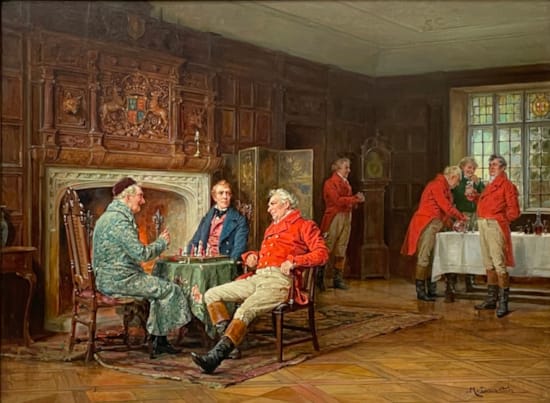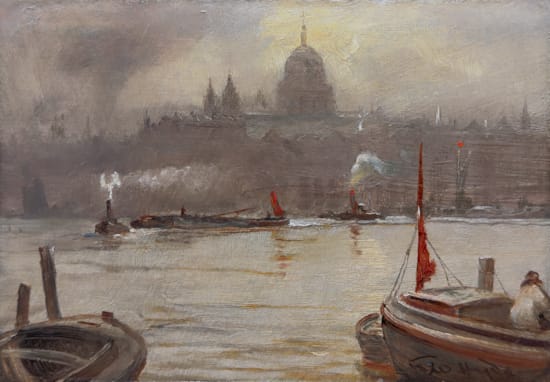Anglo-Chinese School
(19th Century)
View of Folly Fort on the Canton River
Signed
Oil on canvas
17¼ x 23 in – 43.8 x 58.4 cm
Frame size
23½ x 29 in – 59.7 x 73.7 cm
Oil on canvas
17¼ x 23 in – 43.8 x 58.4 cm
Frame size
23½ x 29 in – 59.7 x 73.7 cm
Tel.: +44 (0)20 7839 7693
Provenance
Private collection, UK;
MacConnal-Mason Gallery, London, 1979;
Private collection, UK
MacConnal-Mason Gallery, London, 1979;
Private collection, UK
Biography
The China trade was extremely lucrative to the Western European countries and trading companies involved. From a near monopoly by the Portuguese in the sixteenth century the Spanish Dutch and English developed strong trading links, and with the European taste for tea, silks and porcelains this trade rapidly expanded in the eighteenth century. Canton was to become the sole Chinese port trading with foreign companies in 1757, leading in turn to greater prominence and importance for the Portuguese territory of Macao at the mouth of the Pearl River on which Canton lies, fifty miles upriver. At the city of Canton an area between the city walls and the river was laid aside for Western companies, these to be governed and policed by Co-Hong, a body composed of thirteen Chinese merchants answerable to the Emperor, a system that was maintained until the opium wars of 1841 and the opening of the treaty ports of Shanghai, Hong Kong, Amoy and Foochow.
The China trade in the latter part of the eighteenth and early nineteenth centuries consisted largely of tea silks, porcelain, lacquer furnishings, ivory and paintings with most European countries represented in Canton, including Britain, France, Holland, Spain, Sweden, Austria and Denmark, and America joining the trade once freed of trading restrictions that had been imposed during British rule. Trade going to China included raw materials, iron, lead, cotton, manufactured goods and latterly opium. The China trade was one in which great fortunes were made and trading houses established, a trade, which expanded dramatically in the middle of the nineteenth century with more ports open, larger faster vessels, and a growth in demand in the West. Paintings although always a minute percentage of the trade, were on occasions shipped in numbers from the late eighteenth century. An early nineteenth century cargo manifest lists thirteen paintings being shipped to the United States in one cargo. However, such paintings in oils and watercolour were more often acquired by the merchants and sea captains trading in Canton. The Chinese artists working in a Western style portraying views of Canton, portraits and ship portraits.
The China trade in the latter part of the eighteenth and early nineteenth centuries consisted largely of tea silks, porcelain, lacquer furnishings, ivory and paintings with most European countries represented in Canton, including Britain, France, Holland, Spain, Sweden, Austria and Denmark, and America joining the trade once freed of trading restrictions that had been imposed during British rule. Trade going to China included raw materials, iron, lead, cotton, manufactured goods and latterly opium. The China trade was one in which great fortunes were made and trading houses established, a trade, which expanded dramatically in the middle of the nineteenth century with more ports open, larger faster vessels, and a growth in demand in the West. Paintings although always a minute percentage of the trade, were on occasions shipped in numbers from the late eighteenth century. An early nineteenth century cargo manifest lists thirteen paintings being shipped to the United States in one cargo. However, such paintings in oils and watercolour were more often acquired by the merchants and sea captains trading in Canton. The Chinese artists working in a Western style portraying views of Canton, portraits and ship portraits.




